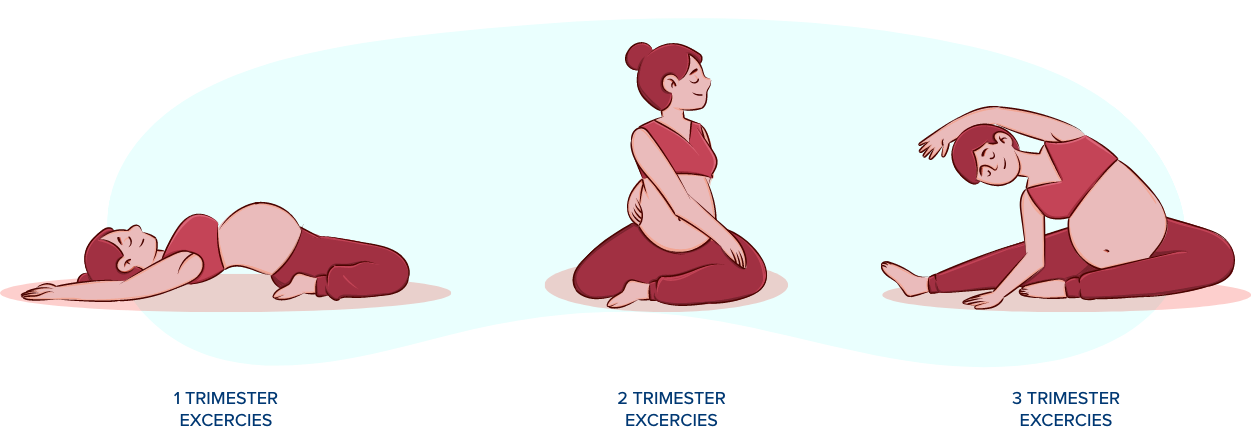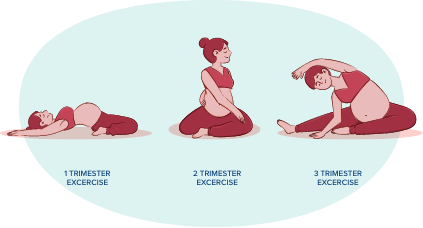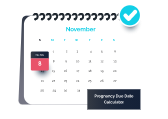





No lab centers are available in this city
A full-term pregnancy lasts for about nine months. In obstetrics, the entire pregnancy time is broken into three trimesters. Both the mother and the foetus undergo gradual changes during these trimesters. The first trimester begins on the first day of the mother’s last menstrual cycle and lasts until the last day of week twelve. Some of the most common first-trimester symptoms one can expect include breast tenderness, nausea, vomiting and frequent peeing sensations. The first trimester is considered the most vulnerable period of the pregnancy as the baby in the womb develops from a fertilised egg to a fully grown foetus. During the 1st trimester of foetal development, the baby starts to grow faster than any other trimester. The umbilical cord, placenta and amniotic cells in the womb start to grow during this pregnancy period. By the end of five weeks or the beginning of the sixth week, a heartbeat can be heard. Additionally, the baby’s bones, muscles and other vital organs begin to develop during the first trimester. By the end of the first trimester, the foetus size will be somewhere around 2 ½-3 inches long. Knowing what to expect will help an individual get ready for the months ahead.


What to Expect During the First Trimester?
Every woman’s first-trimester pregnancy symptoms might differ from each other. The moment an individual becomes pregnant, the body starts to nourish the body; hence, several unusual symptoms can be felt. Here are some of the most common symptoms that one can expect during prenatal development in the first trimester:
You can online book a blood lab test to ascertain pregnancy at a lab near you at the most competitive prices with Max Lab. Check the cost of the pregnancy test online, and what the sample collection will entail, and book an appointment with complete ease.
During the first trimester, the foetal development is at maximum, where the foetus grows from a poppy seed-sized embryo to a lemon-sized foetus with millions of cells. Towards the end of the first trimester, the baby inside the womb can move its arms and legs, and the organs start to function. Talking to a healthcare professional during the entire pregnancy period is advisable to keep both the mother and baby healthy as they navigate the pregnancy journey.
Foetal Development Benchmarks for the First Trimester
Foetal development during the first trimester is an orderly and intricate process. Between conception and delivery, an individual’s body goes through many developmental stages that have to occur. To understand foetal growth benchmarks during the first trimester, the period can be divided into three months.
First Month (week 1 to week 4)
The first two weeks of pregnancy are the most essential period of the pregnancy journey. During this period, the body releases more hormones than usual as the uterus prepares itself for a potential pregnancy. In the third week, the fertilisation process occurs, where sperm and egg join to create a zygote. In the fourth week, a tiny bundle of cells unite into a blastocyst and implants into the uterus lining. By the end of the fourth week, the blastocyst is about 2 millimetres long.
Second Month (week 5 to week 8)
During the fifth week, all the major symptoms related to pregnancy begin to occur. The neural tube (which becomes the brain and spinal cord of the foetus) begins to form. Tiny limb buds begin to form, becoming the baby's arms and legs. Additionally, soft cartilage in the foetus begins to take the shape of bones. At this stage, the embryo’s head is larger than the rest of the body. At the end of the eighth week, the eyes and ears of the embryo begin to form.
Third Month (week 9 to week 12)
The embryo becomes a foetus in the third month of the first trimester. During the third month, the foetus develops distinct facial features like limbs, organs, muscles and bones. By the end of the twelfth week, the foetus has an assigned sex, but the same is not visible during the ultrasound for several more weeks. At the end of the third month in the first trimester, the development of the foetus is at its maximum. Most individuals also begin to feel relaxation from morning sickness as well during the third month of pregnancy.
When Should One Visit the Doctor?
An individual must schedule at least one prenatal visit with their healthcare provider during the first twelve weeks of pregnancy. While every woman experiences pregnancy differently, they must speak to their doctor if they experience several changes in the body, such as severe cramps, vaginal discharge, frequent urination, vomiting and nauseating feeling and persistent fever. The individual’s medical history, gynaecological and family medical history are asked during the prenatal visits. An individual can also expect the doctor to check the following:
Pregnancy, childbirth and the first few weeks of pregnancy are unlike any other time in life. Getting regular prenatal checkups during foetal development in the first trimester is vital for every expecting mother-to-be. Booking a well-priced prenatal test at Max Lab is one of the best ways to remain informed about the health of both the mother and the baby. One can also avail of an at-home sample collection facility when they choose to book their pregnancy test from Max Lab.

Get ready for your baby's arrival
Sign up takes less than 60 secs and gives you access to your offers, orders and lab tests.
Looks like you are not registered with us. Please Sign up to proceed
OTP will be sent to this number by SMS
We have successfully received your details. One of the agents will call you back soon.
 To reach our help desk call 9213188888
To reach our help desk call 9213188888
No Lab Centers are available in this city
Looks like you are not registered with us. Please Sign up to proceed
OTP will be sent to this number by SMS
Not Registered Yet? Signup now.Looks like you are not registered with us. Please Sign up to proceed





 7982100200
7982100200.png)